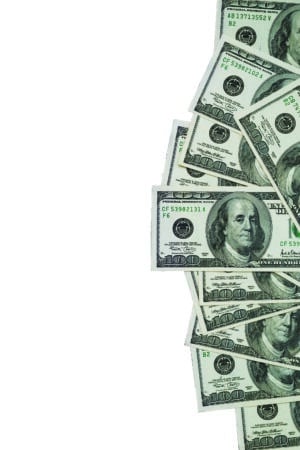Banks earned an estimated $15 billion from overdraft fees in 2019, and smaller institutions brought in almost as much income per account as large banks, according to research from the Consumer Financial Protection Bureau.
Noting the effects that overdraft fees have on consumers, the CFPB said in a statement yesterday that it plans to enhance supervisory and enforcement activity with banks that heavily depend on overdraft fees.
“Previous CFPB research has shown that overdraft presents serious risks to consumers, with under 9 percent of consumer accounts paying 10 or more overdrafts per year, accounting for close to 80 percent of all overdraft revenue,” the CFPB said in the statement.
The agency also pointed to Federal Deposit Insurance Corp. data released this week that showed that insured banks had $69.5 billion in earnings in the third quarter of 2021, up 36 percent from the prior year.
“Banks are on pace to surpass their pre-pandemic profitability,” the CFPB said.
The CFPB used information from call reports submitted to the FDIC to show that banks with more than $1 billion in assets saw overdraft fee income increase approximately 1.7 percent annually from 2015 to 2019. Including estimated fees from smaller institutions, the research showed that nearly two-thirds of fee revenue came from overdraft fees and nonsufficient funds penalties, for an estimated $15.47 billion.
“Rather than competing on quality service and attractive interest rates, many banks have become hooked on overdraft fees to feed their profit model,” CFPB Director Rohit Chopra said in the statement. “We will be taking action to restore meaningful competition to this market.”
Three banks – JPMorgan Chase, Wells Fargo and Bank of America – accounted for 44 percent of the fee income, the CFPB said. The research did find that aggregate revenues from overdraft fees and nonsufficient funds penalties declined by 26.2 percent in 2020, and the CFPB noted that this drop was likely due to higher checking account balances resulting from federal stimulus payments.
Separately, Capital One said Wednesday that the bank will get rid of all overdraft fees, the latest bank to do so this year and one of the largest financial institutions to shy away from the long-hated practice.
The Virginia-based bank said it will still allow customers to overdraft, but it will no longer charge a fee to do so. Any eligible customers can opt into fee-free overdraft at any times, the bank said.
A number of other banks have announced this year – Ally Bank and regional banking giant PNC for example – that they would end overdraft fees or create programs that would greatly lower the chance a customer would get hit with an overdraft fees.
In an email to employees, Capital One CEO Richard Fairbank said the move was part of “our effort to bring ingenuity, simplicity and humanity” back to banking.
Consumer advocates applauded the move, especially since Capital One is one of the nation’s largest banks.
“Capital One’s complete elimination of overdraft and NSF (non-sufficient funds) fees is a landmark moment for American families,” said Lauren Saunders, associate director at the National Consumer Law Center, in a statement.
In a separate study, the CFPB took another look at data it had previously obtained from core processors about credit unions and small banks, finding that while small institutions with overdraft programs charged lower fees on average, consumers had similar outcomes to those at larger banks.
The core processor data primarily covered 2014, and the sample represented 25.4 percent of credit unions and 58 percent of banks offering checking account services. The CFPB acknowledged in its report that the sample might not be representative of small institutions overall.
CFPB researchers found that 92.9 percent of smaller banks and 60.9 percent of credit unions had an overdraft program, which the CFPB said made the programs less common at these institutions than among large banks.
While overdraft and nonsufficient funds fees were 13 percent to 19 percent lower at small banks and credit unions than at large banks, the CFPB said, credit unions and small banks with an overdraft program earned $42.33 and $40.37 in annual overdraft revenue per account, respectively, 6 percent and 11 percent less than large banks, respectively.
Material from The Associated Press was used in this report









